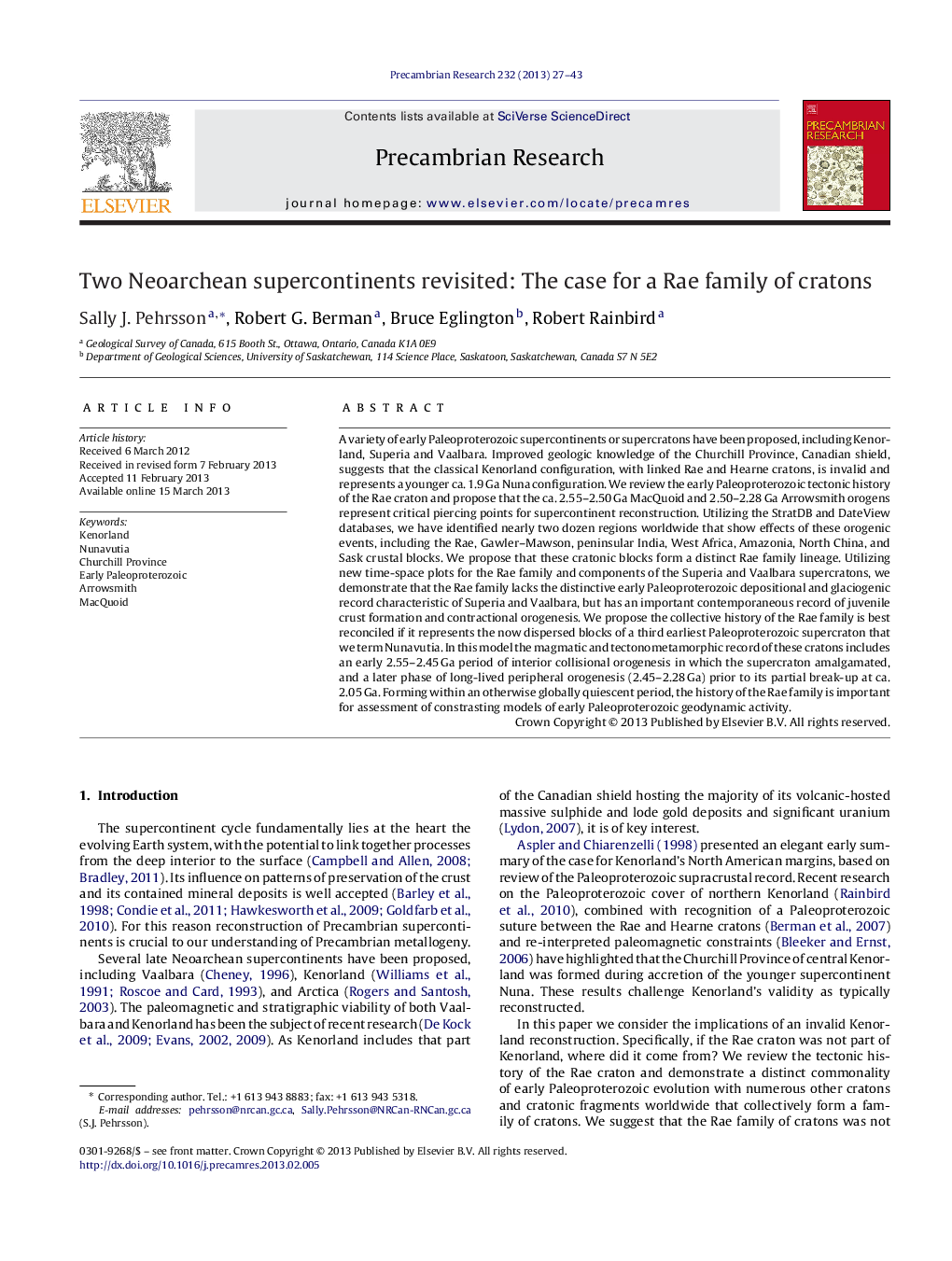| کد مقاله | کد نشریه | سال انتشار | مقاله انگلیسی | نسخه تمام متن |
|---|---|---|---|---|
| 4723113 | 1639642 | 2013 | 17 صفحه PDF | دانلود رایگان |

A variety of early Paleoproterozoic supercontinents or supercratons have been proposed, including Kenorland, Superia and Vaalbara. Improved geologic knowledge of the Churchill Province, Canadian shield, suggests that the classical Kenorland configuration, with linked Rae and Hearne cratons, is invalid and represents a younger ca. 1.9 Ga Nuna configuration. We review the early Paleoproterozoic tectonic history of the Rae craton and propose that the ca. 2.55–2.50 Ga MacQuoid and 2.50–2.28 Ga Arrowsmith orogens represent critical piercing points for supercontinent reconstruction. Utilizing the StratDB and DateView databases, we have identified nearly two dozen regions worldwide that show effects of these orogenic events, including the Rae, Gawler–Mawson, peninsular India, West Africa, Amazonia, North China, and Sask crustal blocks. We propose that these cratonic blocks form a distinct Rae family lineage. Utilizing new time-space plots for the Rae family and components of the Superia and Vaalbara supercratons, we demonstrate that the Rae family lacks the distinctive early Paleoproterozoic depositional and glaciogenic record characteristic of Superia and Vaalbara, but has an important contemporaneous record of juvenile crust formation and contractional orogenesis. We propose the collective history of the Rae family is best reconciled if it represents the now dispersed blocks of a third earliest Paleoproterozoic supercraton that we term Nunavutia. In this model the magmatic and tectonometamorphic record of these cratons includes an early 2.55–2.45 Ga period of interior collisional orogenesis in which the supercraton amalgamated, and a later phase of long-lived peripheral orogenesis (2.45–2.28 Ga) prior to its partial break-up at ca. 2.05 Ga. Forming within an otherwise globally quiescent period, the history of the Rae family is important for assessment of constrasting models of early Paleoproterozoic geodynamic activity.
► Revises a classic paper on supercontinent Kenorland, showing the original configuration is invalid.
► Using 2.55–2.3 Ga orogens as a barcode, provides the first global compilation of cratons that form a distinctive clan.
► Presents the first geodynamic charts cratons with a common history, summarizing events and Nd and Hf signatures.
► Proposes a third Neoarchean supercraton, Nunavutia, which assembled ca. 2.55–2.45 and broke-up by 2.05 Ga.
Journal: Precambrian Research - Volume 232, July 2013, Pages 27–43